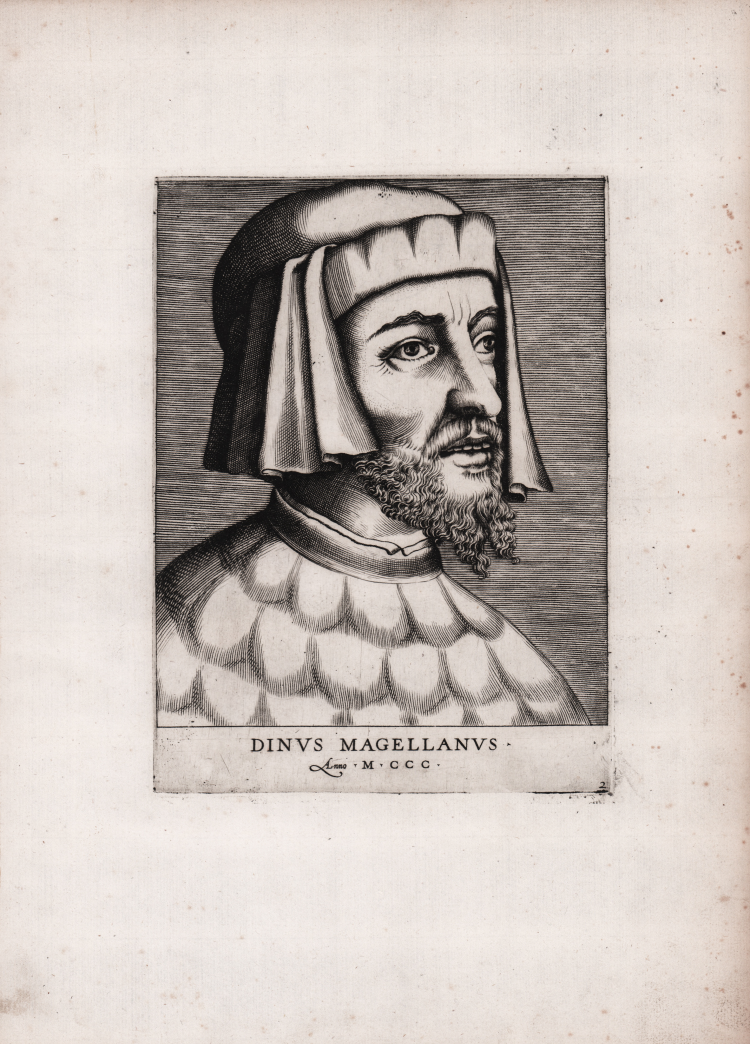



| Reference: | S45324 |
| Author | Enea VICO |
| Year: | 1566 ca. |
| Measures: | 160 x 215 mm |


| Reference: | S45324 |
| Author | Enea VICO |
| Year: | 1566 ca. |
| Measures: | 160 x 215 mm |
The portrait belongs to the famous series Illustrium iureconsultorum imagines quae inveniri potuerunt ad vivam effigiem expressae. Ex Musaeo Marci Mantuae Benavidij Patavini iureconsulti clarissimi published in Rome by Antonio Lafreri in 1566, depicting 47 famous Italian lawyers from the collection of Marco Mantova Benavides. The first 24 were published in 1566 by Antoine Lafréry; the remaining 23 were published in 1570 by Bolognino Zaltieri.
The plates published by Lafréry are attributed to Enea Vico on stylistic and circumstantial grounds. They resemble series produced by Vico in the 1540s and it is quite possible that, like those, these were also engraved some years before they were published by Lafréry.
Alessia Alberti writes: "The frontispiece, also architectural here, takes on a precise allegorical value and refers, through the figures of Fortitude (on the left, with a column), Justice (above, with sword and scales) and Prudence (on the right, with mirror and snake), to the theme of virtue. This is followed seamlessly by twenty-four intaglio plates with full-page effigies of the jurists organized chronologically. The focus is on the faces and the only textual component resides in the lapidary captions placed in the lower margin, with the name, in some cases the provenance, followed by the date of the floruit and the number of the plate. This cutting of the page contributes to the series' appreciable uniformity, despite the heterogeneity of the models-probably paintings, themselves inspired by a variety of sources in painting, sculpture, and medals-which at that time were kept in the private collection of the author of this book, the Paduan jurist Marco Mantova Benavides (1489-1582), and which were subsequently dispersed. The decision not to include typographical texts as well is perhaps to be read here in relation to a work on the same subject that Mantua Benavides had published some time earlier, Epitoma Virorum Illustrium qui vel scripserunt, vel iurisprudentiam docuerunt in Scholis et quo tempore etiam floruerunt, (Padua, Grazioso Percacino, 1555), a more extensive but unaccompanied review of iconographic material, of which the Lafreri’s collection illustrated a selection. The relationship between the book's author Mantua Benavides and the publisher Lafréry remain to be defined. Their names in fact appear to have been previously associated with an engraving published in Rome in 1553 by Lafréry, depicting the colossal Hercules in sculpture erected by Bartolomeo Ammannati in the courtyard of the Mantova Benavides palace in Padua. It is plausible that the conduit and trigger for the collaboration between the two may have been the engraver Enea Vico - to whom the engraving of the Benavides Hercules is attributable - who appears to be as closely related to the Paduan collector as to Lafréry. [...] After Lafréry's death, the paltes of this series were assigned to Stefano Duchet, who gave them in 1581 to Paolo Graziani ("27 Pezi de Jurij consulti"); they were then acquired by Pietro De Nobili (1585), whose name appears on the title page in late editions”.
Engraving, lacking signature and publishing details. Example in the first state of two, before Pietro de Nobili's address.
Magnificent proof, richly toned, impressed on contemporary laid paper, some oxidation, otherwise in excellent condition.
Bibliografia
Alessia Alberti, La Raccolta Lafreriana di Ritratti della Biblioteca Trivulziana (TRIV. B 498), pp. 108-112.
Enea VICO (Parma 1523 - Ferrara 1567)
|
Enea, son of Francesco, was antique dealer, drawer, engraver and numismatist. He was born in Parma on January 29th, 1523, according to what Huber says. After the first school years in the city, and very likely after he made acquaintance with the works of Giulio Romano, Vico moved to Rome in 1541. He then worked for Tommaso Barlacchi, who also engraved with him a series of Grottesche, in 1542. In the classical atmosphere of Rome, Vico’s style developed according to that of Perin del Vaga and Francesco Salviati, but always with Parmigianino as main reference. Around the first half of the century and after studying the works of Marcantonio, Agostino Veneziano, Caraglio and Bonasone, Vico acquired his own, peculiar style which can be seen in his main works. From Rome Vico moved to Florence, where he worked for Cosimo I, and then went to Venice, in 1557. In 1563 he is already in Ferrara, working for Alfonso d’Este till his death in 1567.
|
Enea VICO (Parma 1523 - Ferrara 1567)
|
Enea, son of Francesco, was antique dealer, drawer, engraver and numismatist. He was born in Parma on January 29th, 1523, according to what Huber says. After the first school years in the city, and very likely after he made acquaintance with the works of Giulio Romano, Vico moved to Rome in 1541. He then worked for Tommaso Barlacchi, who also engraved with him a series of Grottesche, in 1542. In the classical atmosphere of Rome, Vico’s style developed according to that of Perin del Vaga and Francesco Salviati, but always with Parmigianino as main reference. Around the first half of the century and after studying the works of Marcantonio, Agostino Veneziano, Caraglio and Bonasone, Vico acquired his own, peculiar style which can be seen in his main works. From Rome Vico moved to Florence, where he worked for Cosimo I, and then went to Venice, in 1557. In 1563 he is already in Ferrara, working for Alfonso d’Este till his death in 1567.
|